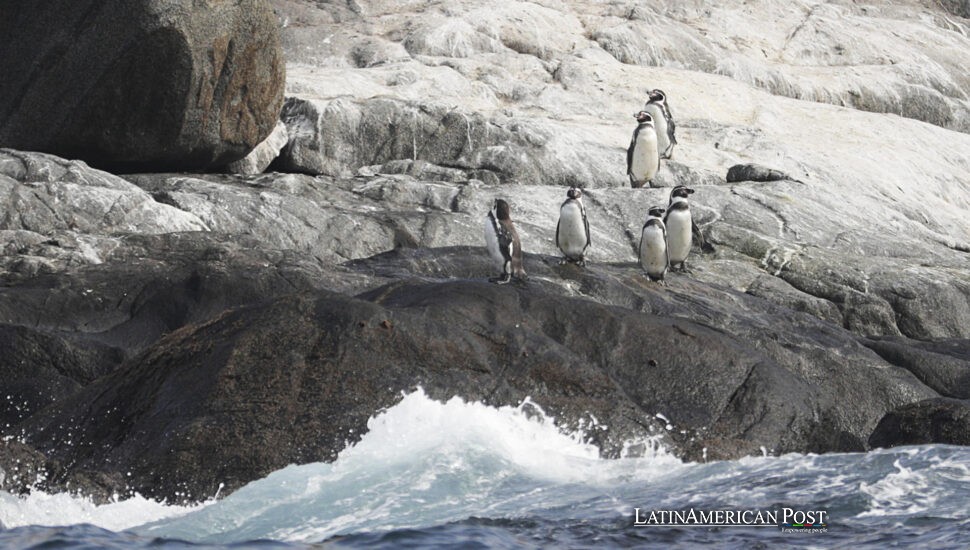Chile Fights Looming Peril for Humboldt Penguins’ Future

One year after Chile declared an ambitious plan to save its Humboldt penguins, conservationists warn the species remains at grave risk. Mounting threats—from climate upheaval to overfishing and invasive industrial projects—reflect the country’s struggle to protect these emblematic coastal birds.
A Legacy of Vulnerability
Humboldt penguin birds living in Chile’s mild coastal areas now have challenges. Their population dropped because of it. The penguins make nests near the cold, food-filled ocean currents off South America’s west coast. In the past, many Humboldt penguins lived in colonies there. However, as EFE learned from interviews with local experts, their resilience is undermined by rising ocean temperatures, decimated fish stocks, and an intensifying El Niño phenomenon. Historically, coastal birds in Latin America have been subject to various human-driven threats. During the 1800s, South American guano deposits attained great value. This fostered a period of increased fertilizer production. It also damaged seabird living areas. Humboldt penguins face threats. Guano extraction continues. Excessive fishing and contamination are problems. A negative sequence begins when important food sources disappear. Nesting locations worsen.
Chile is home to roughly 80 percent of this penguin’s global population, yet the International Union for Conservation of Nature (IUCN) has classified the species as “vulnerable.” Marine biologist Catalina Sapag, interviewed by EFE, said, “We’re already at the edge. Coastal development, pollution, and relentless overfishing are chipping away at their environment.” The process has been gradual but unrelenting—once-teeming waters along the Humboldt Current now exhibit depleting fish shoals, undermining a penguin population relying on anchoveta and sardines for centuries.
Marine and Terrestrial Threats
Humboldt penguins encounter life-threatening challenges from the open sea to the rocky coasts. Over the past decades, as major fisheries target the anchoveta, a crucial link in the penguin’s diet, the birds face more competition and fewer fish. Meanwhile, heavy industrialization along Chile’s coast pollutes the waters with oil and chemical spills. Even modest changes in ocean temperature—exacerbated by climate change—can drive prey species away, forcing adult penguins to travel farther in search of food. During strong El Niño events, oxygen-poor waters compound this effect, often leading to adult penguins starving before they can return to feed chicks.
Onshore, the threats continue. Mining for guano—a practice still carried out on some Chilean islands—obliterates the thick layers in which Humboldt penguins burrow for shelter. As a result, essential breeding grounds lie exposed, leaving eggs or chicks vulnerable to extreme heat or predation. Environmental organizations have fought to block major projects like the Dominga mining port complex in the region’s best-known nesting area, the Reserva Nacional Pingüino de Humboldt. “The increased vessel traffic, higher oil spill risks, and intense light pollution would disrupt feeding and reproduction,” explained Sapag, a marine biologist with Oceana, in her conversation with EFE. Though Chilean authorities have rejected Dominga on environmental grounds, the company continues to seek its approval through courts, keeping local communities and conservationists on edge.
Growing Demand for Protection
Faced with such steep challenges, Chile launched a national conservation plan in mid-2024, pledging to bolster penguin numbers over the next two decades. This initiative includes stricter oversight of fishing zones, improved marine-protected areas, and heightened controls on habitat disturbance.
According to Chilean ornithologist and Andrés Bello University researcher Alejandro Simeone, who spoke with EFE, “It might take at least a decade to see real improvements in population data. But we needed to set formal goals if we hope to avoid the extinction path.”
Simeone adds that while laws and decrees may be drafted, it remains essential “to translate those policies into effective biological outcomes—monitoring breeding success, limiting bycatch in fishing nets, and reining in coastal development.”
This is not a uniquely Chilean dilemma. Across Latin America, tensions arise when preserving vulnerable species collides with economic drives. Yet in a region historically known for robust grass-roots activism—from indigenous movements in the Amazon to local fishers in the Galápagos—there’s faith that public pressure can move governments. Still, marine experts warn that sustaining long-term momentum can be tricky, especially if influential commercial interests, from industrial fisheries to mining giants, push back.
The challenges reach beyond laws and activism. As climate shifts intensify El Niño cycles, warmer waters exacerbate fish scarcity—a phenomenon predicted by scientists who analyze warming patterns. Some researchers suspect anthropogenic climate change might make these El Niño events more frequent or severe, further stressing the region’s oceanic productivity. Even minor escalations in sea temperature can throw off the ecosystem balance, with penguins bearing the immediate brunt.
A Vital Symbol for Latin America’s Seas
From talks with area conservationists, the Humboldt penguin is a threatened bird. It inhabits thriving coastal areas and represents a fragile balance. This balance underpins travel, customs, and the need for ocean events. Agostina Rossi, a Greenpeace biodiversity expert, told EFE: “They show how healthy the ocean is.” If large numbers of penguins starve or vanish, it signifies an imbalance at multiple trophic levels, from plankton dynamics to apex predators.
In a broader sense, the species also resonates with ecotourism: visitors flock to see these charismatic birds, fueling local economies. Losing them would be a blow to community livelihoods. Regarding conservation, environmental supporters state that penguins’ likable quality promotes public understanding. This motivates greater help for actions like fishing limits or habitat safeguards. The real challenge is creating a unified effort. This effort joins public demands with governmental steps so future news stories don’t repeat past decline warnings.
Ultimately, the Humboldt penguin’s plight reminds Latin America of a more significant reality. Indeed, the region’s cultural identity has long been tied to its extraordinary biodiversity and these cherished species anchor ecologies that feed millions. If overfishing and industrial expansion sabotages the seas that have sustained generations, the repercussions extend well beyond one bird. It becomes a story of how humans shape the environment that, in turn, shapes them.
Also Read: Mexican Technology Soars with Groundbreaking Pegasus Aircraft Launch
Whether Chile’s newly adopted measures will effectively safeguard these penguins remains uncertain. Scientists and activists urge vigilance, pressing for the best strategies to combine rigorous population tracking with direct government intervention. The threat is real, but so is the passion to save, a hallmark of the country’s marine realm. In that tension between commerce and conservation, the fate of the Humboldt penguin underscores that the line separating thriving wildlife from looming extinction grows increasingly fragile. When its troubles cause wider worry about Latin America’s sea past, the steady reduction of one penguin type could create a new respect for the large but delicate life under ocean surfaces.




